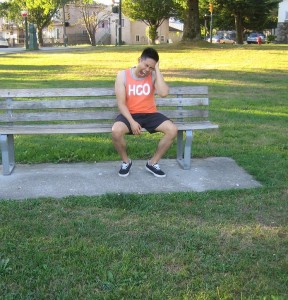Cervicogenic headaches are those originate from the neck, usually from the bottom of the skull at the top of the spine. The headache occurs from time to time and slowly becomes continuous. They are usually due to stress, difficulty in sleeping, fatigue, poor posture as well as back and neck injuries. The headaches usually last for one hour or even up to one week.
Symptoms of cervicogenic headaches
- A steady pain that does not throb
- Pain is felt on one side of the head or face
Stiffness of the neck or the neck could not move normally. - There is pain when sneezing, coughing and taking deep breaths
- Stiffness of the neck or the neck could not move normally
- Pain that last for hour or days
- Pain can be felt in one area such as the front, back or on the side of head or eye
- Some symptoms are the same as a migraine such as pain in the arm or shoulder; sensitivity to bright lights and loud noises, sick in the stomach and blurry vision
Causes
- Holding the head out in front of the body or also called “forward head motion,” that places significant weight on the neck and upper back.
- Sports injuries, falls, whiplash or arthritis where the nerves found in the neck can be compressed or squeezed.
- Tumor or small tear in the upper spine or neck.
Treatment
- Get plenty of sleep every night to prevent episodes of cervicogenic headaches.
- Apply an ice pack on the painful area of the head such as the forehead, temples and the back of the neck.
- Using the index finger, apply gentle and steady rotating pressure to the area of the head that is painful for at least 7-15 seconds and release and repeat as needed.
- Take the prescribed non-steroidal anti-inflammatory drugs (NSAIDs) such as aspirin or ibuprofen and muscle relaxants to reduce the discomfort and inflammation.
- Consult a physical therapist for stretching and exercises to relieve the discomfort caused by cervicogenic headaches.
- Maintain good posture while sitting or standing to lessen the pressure placed on the spine and minimizes the episodes of cervicogenic headaches. When sitting, support the back with a pillow or a rolled towel can also be used. Make sure that the hips are pressed firmly on the back of the chair and lean forward to make the body comfortable. This will lessen the pressure placed in the spine when sitting.
- Perform regular exercises such as simple walking for at least 20-30 minutes every day to strengthen the back and minimize the headaches. Another alternative is walking on a treadmill.

